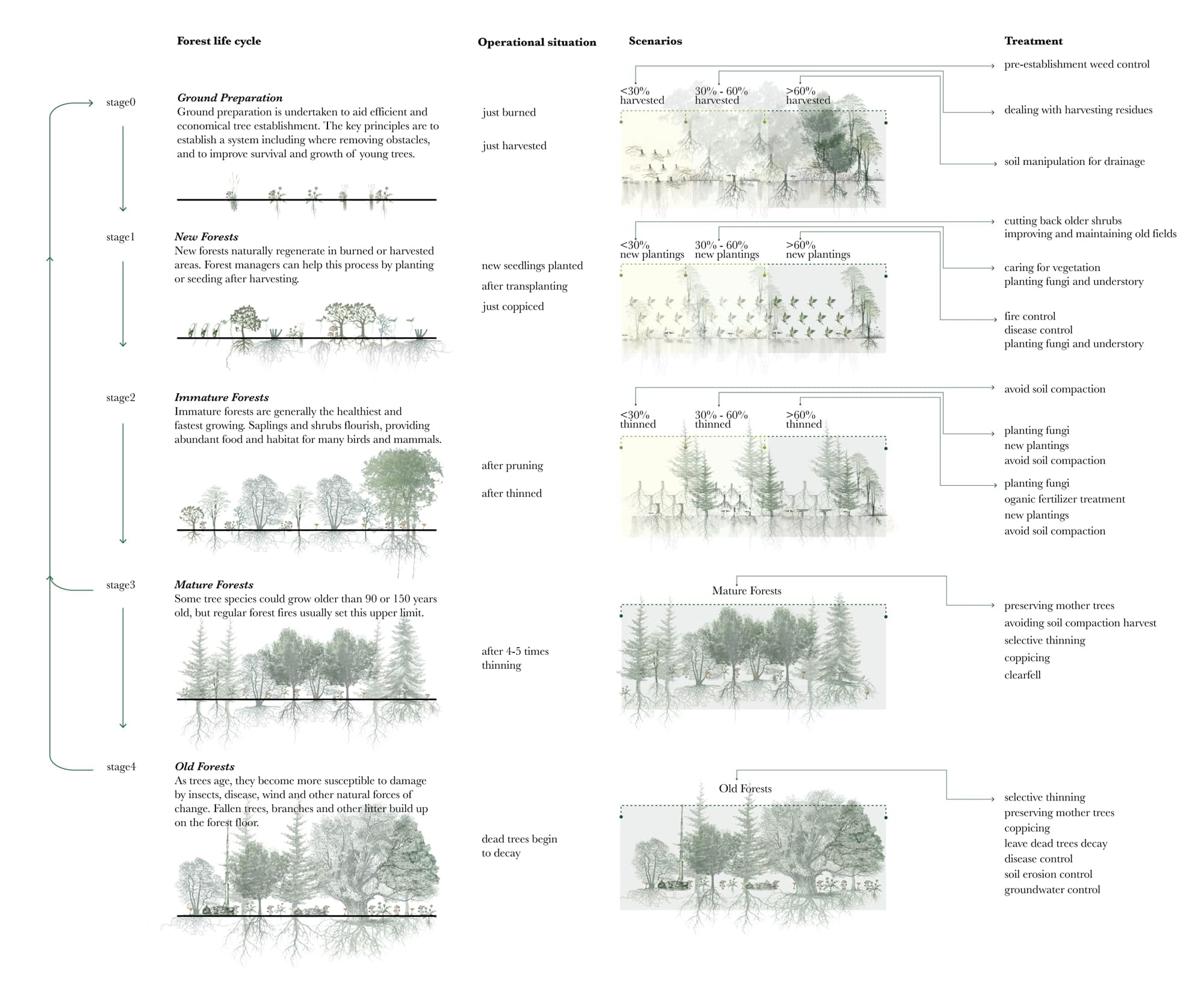Forest life cycle catalogue

Source: Forestry England
Forest life cycle are divided into 5 stages, from ground preparation to old forest. Here we identify the operational sign of each stage, and develop different scenarios of them, each scenario will have corresponding treatment actions.
For example, the operational sign of immature forest is after its first thinning or just pruned, and if the immature forest has more than 60% thinning area, the following treatment will focus more on fungi, organic fertilizer, new plantings and avoid soil compaction.
WWW Management Models
Source: Forest Contribution to Climate Change Mitigation: Management Oriented to Carbon Capture and Storage
We develop our 3 models based on the general guiding of wood wide web.Each of them suits different tree species according to their rotation years. These tree species are the main ones planted in Hooke Park. Later we will apply these models in Hooke park.
The first is the most basic and commonly used, mainly for wood production, and it’s for short rotation trees like beech and sweet chestnut. The key point of this model is to preserve the mother tree, grow new seedlings started from the forest edge and let the felling branches enrich the soil.
The second model is based on the short rotation one, but containing more caring for the soil. It has medium capacity for carbon sequestration. The key to this model is to be more biodiversity in tree species and tree age groups, and regularly check the soil nutrient condition avoiding soil compaction.
The third long rotation model is based on the previous ones, concerning more about the wildlife and biofuels in the forest. The rotation year could be much more than 25 years, like 50 years or so, making the forest more sustainable and considered it as a whole ecosystem.
Operation Catalogue
With these models, we found out another catalogue of broadleaves to see how these trees would change due to the process of management operation. Beech from young one to old will have different shapes and structure after thinning, coppicing, raising, topping and reduction.
The conifer part has a similar pruning process but behaves differently in the vertical.
For the soil, we do the insects control, loosen soil, apply organic matter and residues management to see the subtle changes in the soil .